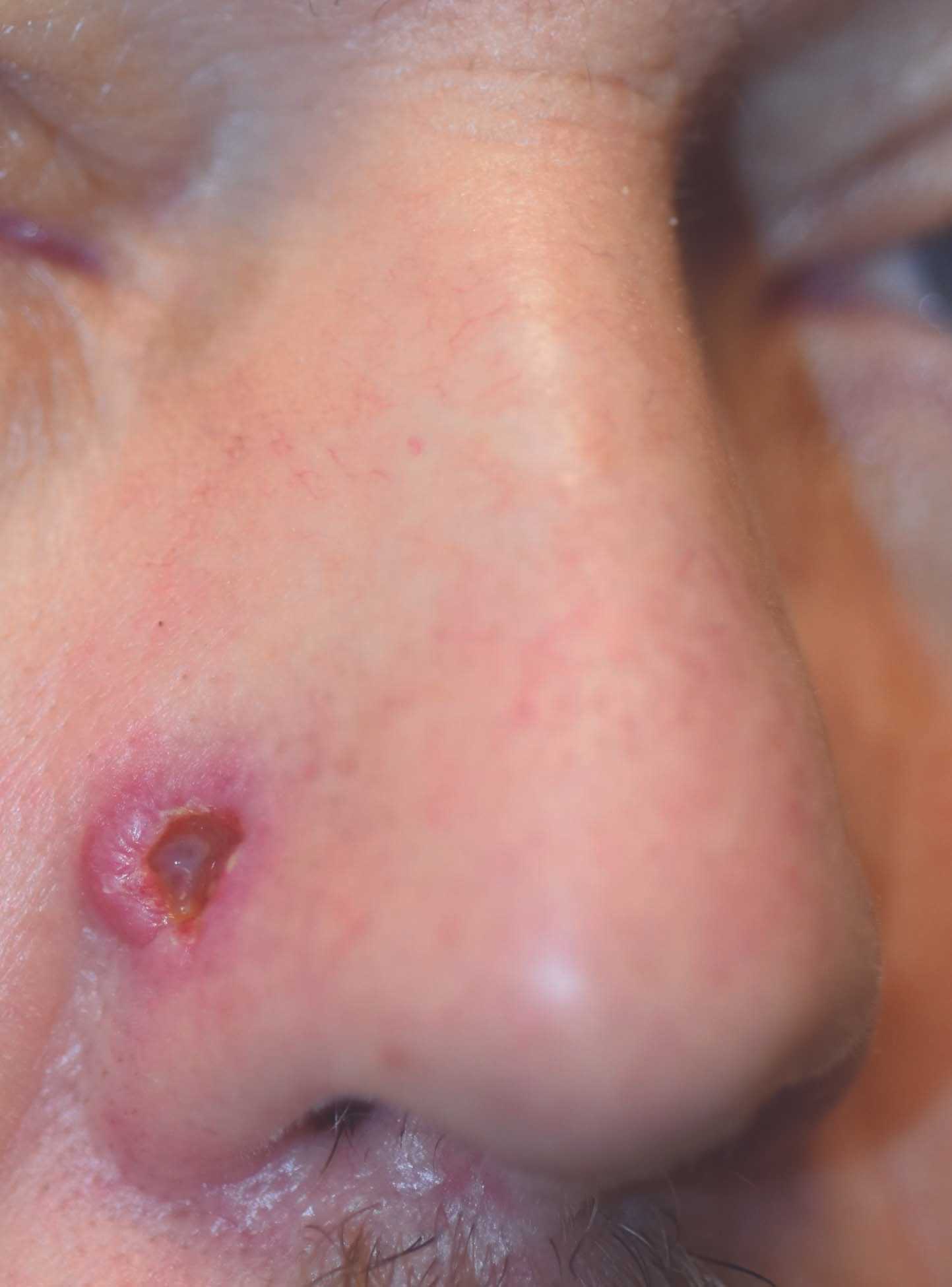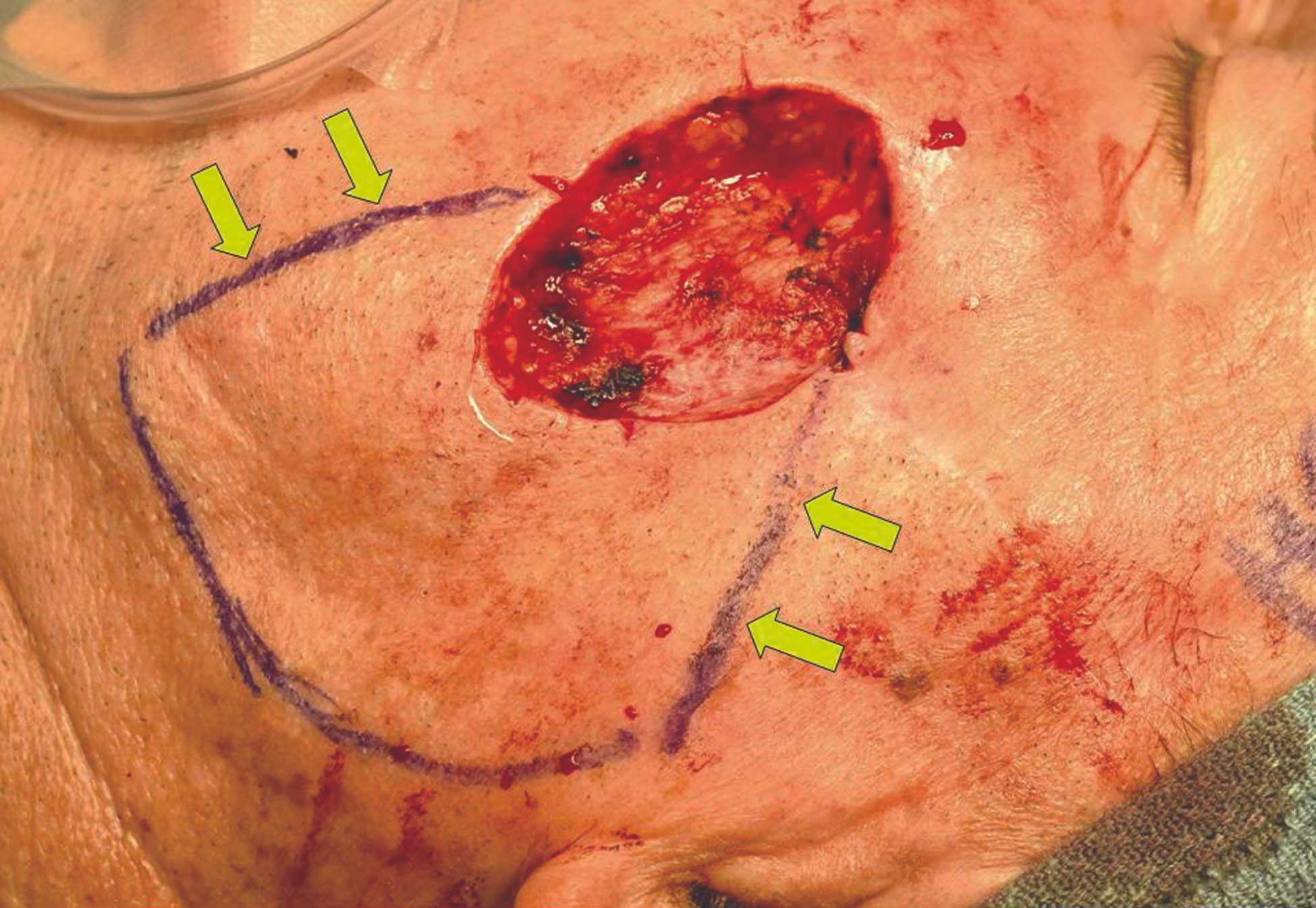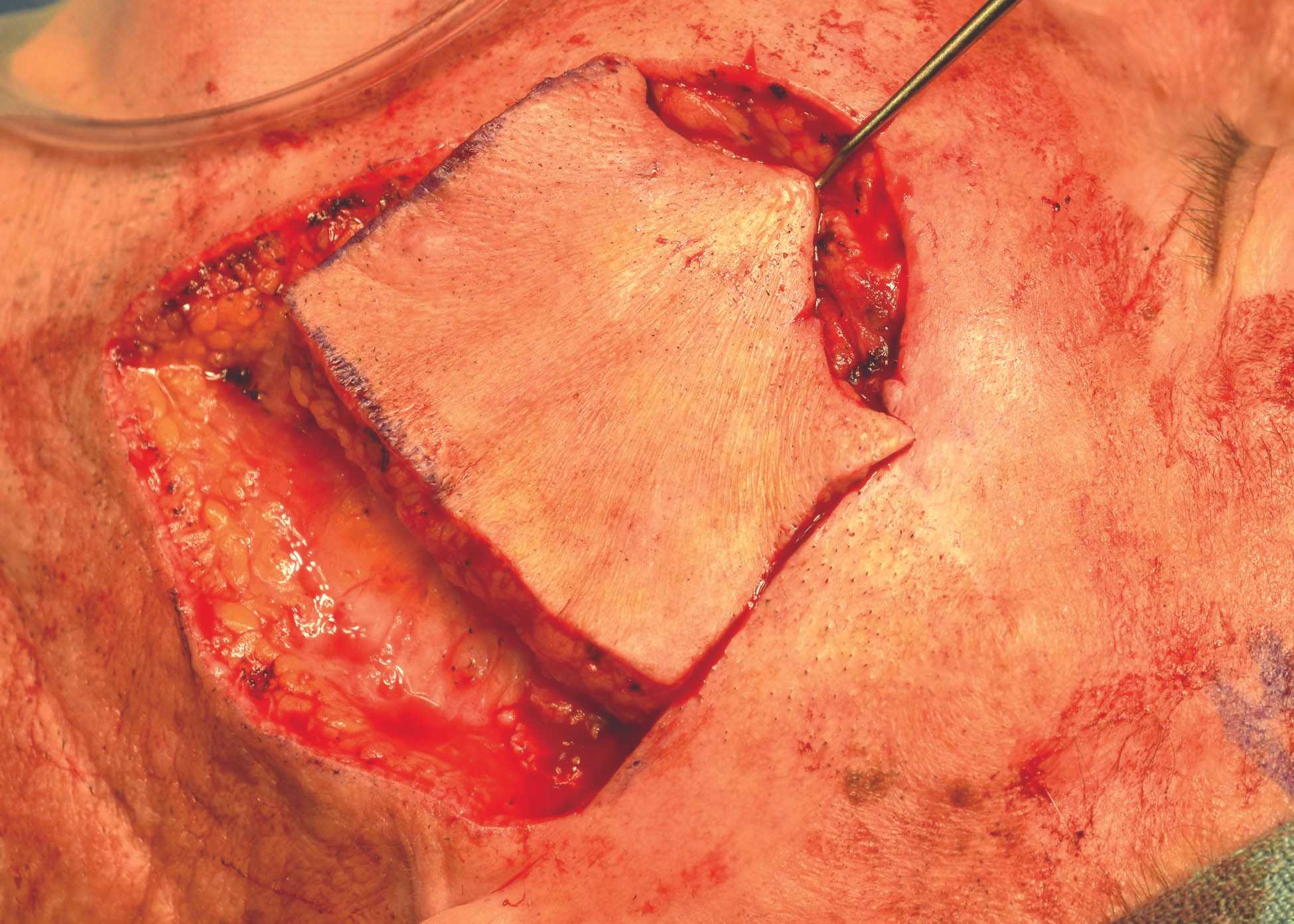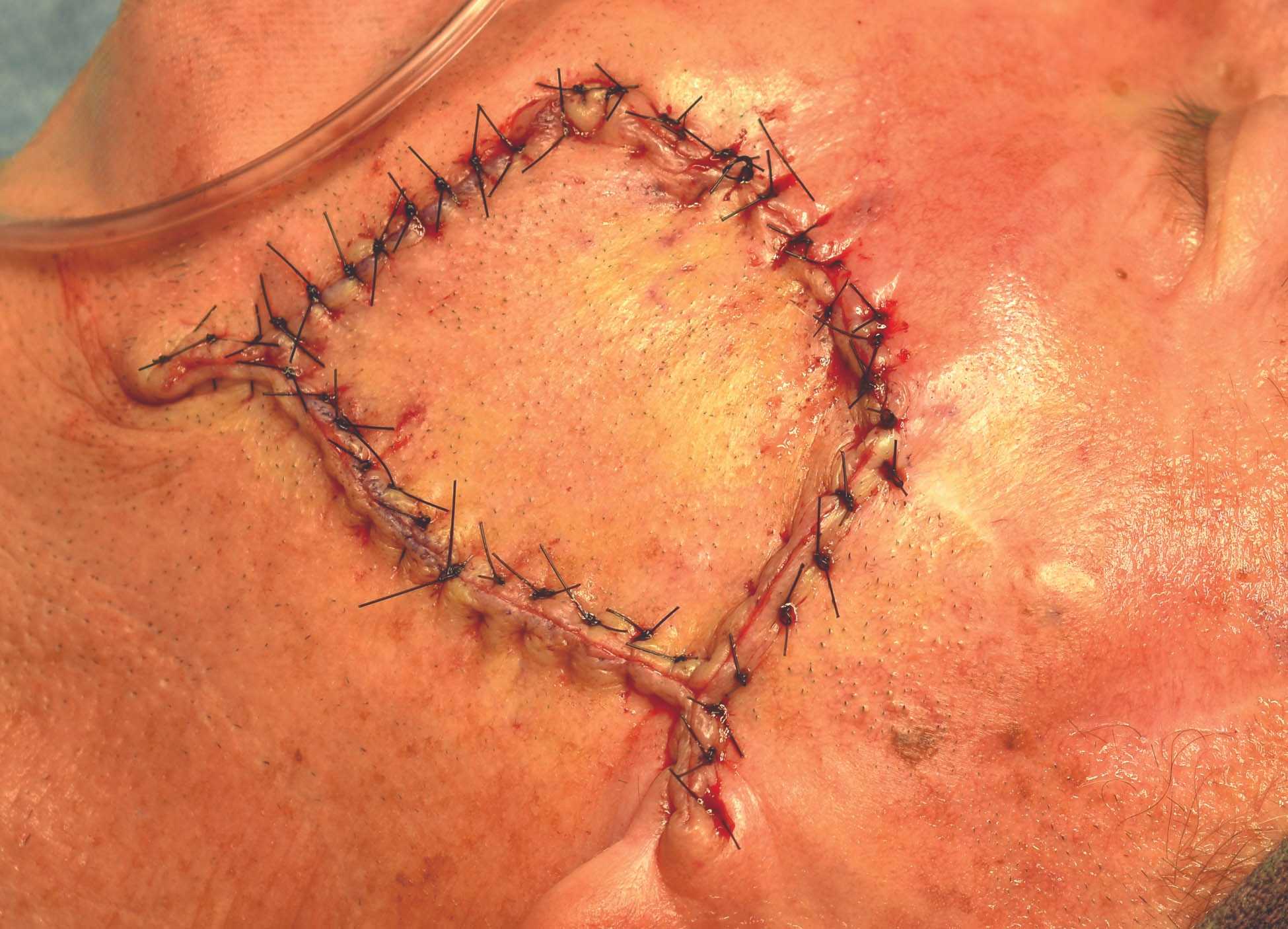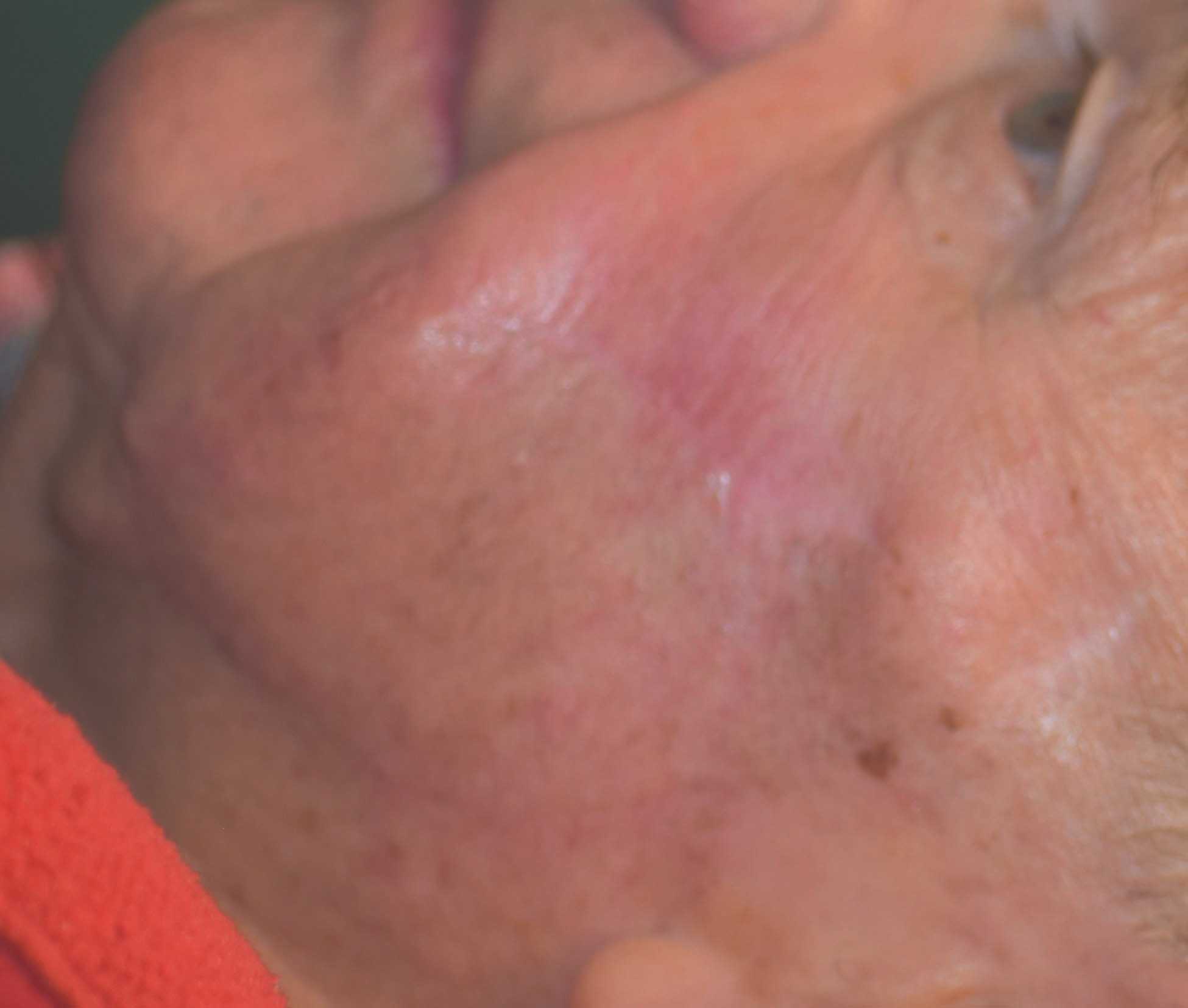Basal Cell Carcinoma Excision from the Lower Lip with Versatile Keystone Flap for Vascularized Skin Replacement
Abstract
Maintenance of intact skin throughout the body is essential to prevent dehydration, to act as a barrier to infection, to allow unrestricted movement, and to provide a normal appearance. A flap is a piece of body tissue, usually skin and fat, that always has its own blood supply. Therefore, a flap can be moved anywhere it can reach without worrying about the circulation present at the place that needs it, which is called the recipient site. When compared with all other possible choices, a flap best meets all the requirements for any area needing skin replacement. The keystone type flap as one such option is so named because its design has the shape of the keystone of a Roman arch. If taken from loose tissues adjacent to a defect, it can be simply cut and advanced for any necessary skin coverage. Direct closure of the donor site where this flap comes from is possible so that usually a quite good overall cosmetic result is also obtained. These virtues are shown as an overview in this video where a keystone flap is transferred after removal of a common basal cell skin cancer from the lower lip.
Case Overview
This elderly woman presented with a long-standing, neglected, ulcerated, and oozing biopsy-proven basal cell skin cancer of the portion of the lower lip below the red vermilion. Since larger than 2 cm in diameter, this would be a high-risk type of basal cell skin cancer,1 so surgery would be the standard of care by a wide excision to try to remove all tumor cells. The specimen is always reviewed later under the microscope to check all edges for any remaining tumor. If negative or no tumor is seen, the chance of cure approaches 100%. If not removed surgically at all, or if the edges still have tumor present, a basal cell cancer will continue to grow and eat away to destroy the entire lower lip. Only for the extremely elderly or patients with other medical problems who would not tolerate anesthesia would non-surgical treatment with radiation therapy be an alternate consideration.1
An operating room was used so that the patient would have a “twilight” sedation to make her pain free and comfortable. To summarize the procedure seen in the video, an area extending about 5–10 mm into normal tissues all around the tumor was marked. This margin was cut all the way down to the muscles of the lip and then peeled off below the tumor to make sure the undersurface was tumor-free. A keystone flap was chosen to fill the hole so created, and that was outlined in the shape of a keystone on the lower chin. The flap borders were cut on all sides until it could be slid upward to not just fill the hole where the tumor had been but to be loose enough so that the red part of the lower lip would not be pulled downward. Because her neck skin was loose, this could be advanced upwards to help close the donor site where the flap had come from.
Another option always possible is to use skin grafts, but these always shrink in time and risk pulling the lip downward so she would be constantly drooling. In addition, since a skin graft is paper-thin, once healed, there would be a conspicuous crater in her chin.2 These potential bad outcomes were prevented by instead using a keystone flap as we did, which gives a superior appearance even though some scars are left.3 This choice proved to be simple to perform in less than an hour with almost no blood loss, so the surgery can be done as an out-patient to allow the patient to go home soon afterward.
Discussion
Basal cell skin cancer is the most common type of cancer in humans.1,4 As a matter of fact, every year the number of newly diagnosed basal cell skin cancers exceeds the number of all other cancers combined.1,4 Often, they may first appear as a non-healing or bleeding sore (i.e. Figure 1), but many subtypes with different appearances exist so that a physician should be seen to help make the correct diagnosis. Risk factors include fair skin, the extent of sun exposure, use of tanning beds, age over 40, and sometimes genetics.4 Prompt treatment will decrease the amount of skin that has to be removed, most often requiring but a few stitches to close things up. Therefore, the amount of scarring will be less, which for many will be important as 85% do occur in the head & neck region.4 High-risk lesions include large or deep lesions as in the presented case or recurrent lesions that have grown back for whatever reasons.1 As such, more tissue must be removed to obtain a cure, sometimes requiring other approaches;5 and then oftentimes a skin graft or flap will be necessary to allow skin healing.
A keystone flap is a trapezoid-shaped local flap from adjacent to a given defect that requires skin replacement.6 It typically consists of skin, fat, and the deep gristle or fascia above the muscles, with its blood supply coming from small branches passing out of the muscle that then pierce through the fascia. The design not only should be over a muscle to ensure adequate circulation but in the loosest tissues that allow the flap to be advanced into the defect while still permitting suturing the donor site closed as well (i.e. Figure 2). All borders are cut down to near the fascia to make the flap loose enough to stretch into the defect. Once reaching the farthest edge of the wound, all sides are sewn together to complete the repair (i.e. Figure 2). The area can be washed with soap and water within a day. Activities would be restricted only to ensure that tension on the sutures is avoided. They are then removed usually within 2 weeks to leave a nice result.
Images
Figure 2. From left to right. A) The open crater can be seen following basal cell skin cancer removal from the left cheek, with the keystone flap design below. Tangents on either side of the defect [arrows] are drawn toward the loose skin of the neck. Their length must be equal to the height of the defect, with a curved line or arc joining them to make a trapezoid. B) The 3 marked sides of the flap are cut down to near the fascia until the flap can be advanced superiorly to the farthest edge of the wound. C) The neck skin is then drawn up into the cheek to allow all sides of the flap to be sutured in place to thereby close all areas. D) Final scars of the left cheek are barely seen 3 months later.
Disclosures
Nothing to disclose.
Statement of Consent
The patient referred to in this video article has given their informed consent to be filmed and is aware that information and images will be published online.
Acknowledgments
Kate Mertz, Surgical Technician, from Bowmanstown, Pennsylvania, was the first assistant for this surgery.
Citations
- Mendez BM, Thornton JF. Current basal and squamous cell skin cancer management. Plast Reconstr Surg. 2018;142(3):373e-387e. doi:10.1097/PRS.0000000000004696.
- Hallock, GG, Morris, SF. Skin grafts and local flaps. Plast Reconstr Surg. 2011;127:5e-22e. doi:10.1097/PRS.0b013e3181fad46c.
- Stone JP, Webb C, McKinnon JG, Dawes JC, McKenzie CD, Temple-Oberle CF. Avoiding skin grafts: the keystone flap in cutaneous defects. Plast Reconstr Surg. 2015;136(2):404–408. doi:10.1097/PRS.0000000000001449.
- Gulleth Y, Goldberg N, Silverman RP, Gastman BR. What is the best surgical margin for a basal cell carcinoma: a meta-analysis of the literature. Plast Reconstr Surg. 2010;126(4):1222-1231. doi:10.1097/PRS.0b013e3181ea450d.
- An Introduction to Mohs Micrographic Surgery. American Society of Dermatologic Surgery.
Available at: https://www.youtube.com/watch?v=W5Paup_-S4A&feature=youtu.be. 2017. - Behan FC. The keystone design perforator island flap in reconstructive surgery. ANZ J Surg. 2003;73(3):112–120. doi:10.1046/j.1445-2197.2003.02638.x.
